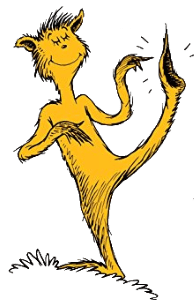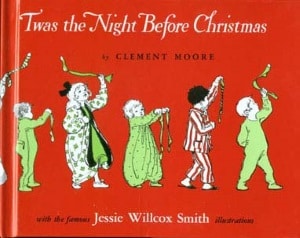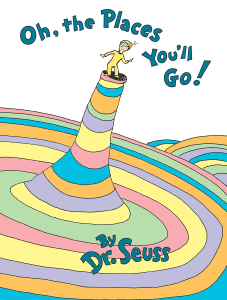
In the last two Rhythm in Poetry lessons, we discussed the “iamb” and the “trochee.” Each of these is a two-syllable poetic “foot.” But iambs and trochees aren’t the only kinds of poetic feet. There are other types of two-syllable feet and even a few different three-syllable feet.
Let’s See the Spondee
The “spondee,” (pronounced “SPON-dee”) is a two-syllable foot in which both syllables are stressed. It is not as common as the iamb and the trochee, but it has a very interesting sound, as you’ll hear in a moment.
A poem written in spondees is said to be in “spondaic.” For example, my poem “Snow Day” is written in spondaic, meaning that every syllable is a stressed syllable. Here’s how it begins:
/ /
“Snow day!”
/ /
Fred said.
/ /
“All play.
/ /
Let’s sled!”
/ /
“No school!
/ /
Just snow.
/ /
Way cool!
/ /
Let’s go!”
As you can see, each line in this poem has two syllables, and each syllable is stressed, meaning each line is a single spondee.
While there are some two-syllable words in English in which both syllables are stressed, such as “bookmark,” “handshake,” “groundhog,” “picnic,” “sunset,” etc., most spondees are formed with two words, such as “hip hop,” “sit down,” “go slow,” and so on.
If you are writing poems in spondaic, you can use one-syllable or two-syllable words, as long as all of the syllables are stressed. In general, it is harder to write in spondaic than in iambic or trochaic but, now that you know about spondees, maybe you’ll want to give it a try?
Let’s Meet the Triple Feet
In English, it’s possible for poetic feet to contain more than two syllables. A poem written using three-syllable feet is called “triple meter.”
The most common three-syllable feet are the “dactyl” (pronounced “DAK-tuhl”) and the “anapest” (pronounced “AN-uh-pest”). Let’s start with the dactyl.
Fingers on Your Feet
Have you heard of the flying dinosaur called the pterodactyl? From the Greek language, “ptero” means “wing” and “dactyl” means “finger.” So a pterodactyl gets it’s name from the fact that it has fingers on its wings.
In poetry, a “dactyl” also gets its name from fingers, but in a different way. Just as your fingers have three joints, or knuckles, a dactyl has three syllables.
When a poem is written in dactyls, we call it “dactylic” (pronounced “dack-TILL-ick”). Some examples of dactylic words include “poetry,” “alphabet,” “excellent,” etc. Do you notice how each of these words is stressed on the first syllable (PO-uh-tree, AL-fuh-bet, EX-suh-lent)?
One common form of poem written in dactylic is the “double-dactyl,” also known as a “higgledy-piggledy.” It is called a double-dactyl because every line contains two dactyls, and one of the words is a six-syllable “double-dactylic,” word. It is sometimes called a “higgledy-piggledy” because these are often the first words of the poem.
Here’s one I wrote about Doctor Frankenstein and his monster:
/ - - / - -
Higgledy-piggledy
/ - - / - -
Modern Prometheus
/ - - / - -
Victor von Frankenstein,
/ - - /
made a new life
/ --/ - -
Bioelectrically.
/ - - / - -
Creature was lonely, said,
/ - - / - -
"If you're not busy, please
/ - - /
make me a wife."
The Anapest Strikes Back
Just as the word “dactyl” comes from Greek, the word “anapest” comes from a Greek word meaning “struck back” or “reversed.” This is because the anapest is the reverse or opposite of the dactyl. That is, an anapest is a three-syllable foot where the stress is on the last syllable instead of the first.
When you write a poem using anapests, it is called “anapestic.” One of the best-known anapestic poems in English is Clement Moore’s famous poem “A Visit From St. Nicholas,” also called “‘Twas the Night Before Christmas.”

- - / - - / - - / - - /
‘Twas the night before Christmas, when all through the house
- - / - - / - - / - - /
Not a creature was stirring, not even a mouse;
Another author who wrote stories in anapestic was none other than Dr. Seuss. For example, here are a couple of lines from his book Oh, the Places You’ll Go!

- - / - - / - - / - - /
You have brains in your head. You have feet in your shoes.
- - / - - / - - / - - /
You can steer yourself any direction you choose.
As you can see, every third syllable is stressed, giving the poem the same rhythm as “A Visit from St. Nicholas”
In fact, except for his “Beginner Books” such as Green Eggs and Ham and One Fish, Two Fish, Red Fish, Blue Fish, nearly all of Dr. Seuss’ rhyming stories were written in anapestic, including The Cat in the Hat, How the Grinch Stole Christmas, Horton Hears a Who, and The Lorax.
You Have Feet in Your Head
While, as Dr. Seuss’ said, “You have feet in your shoes,” you also now have several new “feet” in your head. Poetic feet, that is. And, in just these few lessons, you have learned nearly everything you need to know about rhythm in poetry.
You can use these new feet, and the ones we learned earlier, to create rhythmical – or “metrical” – poems of your own and make them just as fun to read as the works of famous poets like Dr. Seuss, Shel Silverstein, and Jack Prelutsky.
- Update to Poems-by-Length Page - April 18, 2024
- Create Your Own Poetic Puppet Show - April 16, 2024
- Leap into Laughter with “A Festival for Frogs” - March 26, 2024






